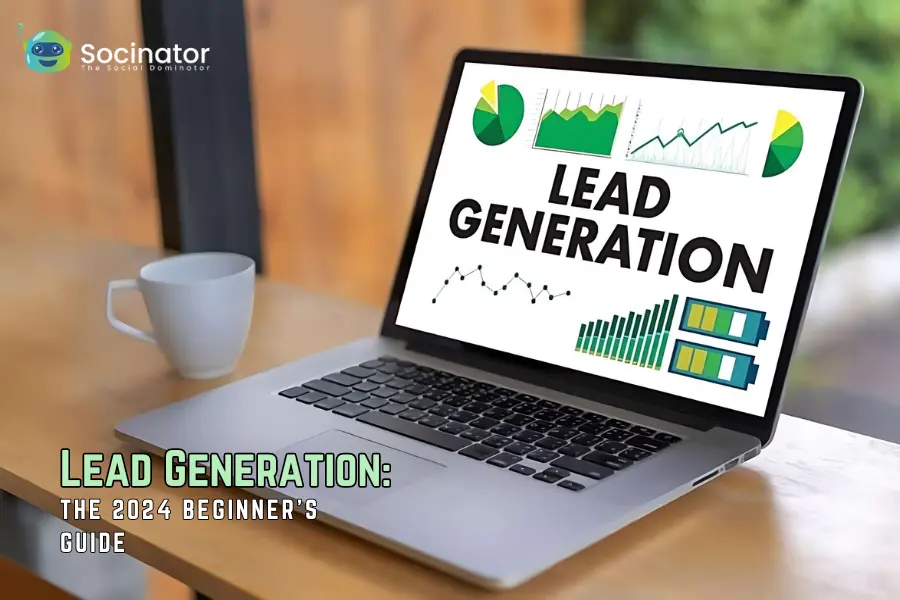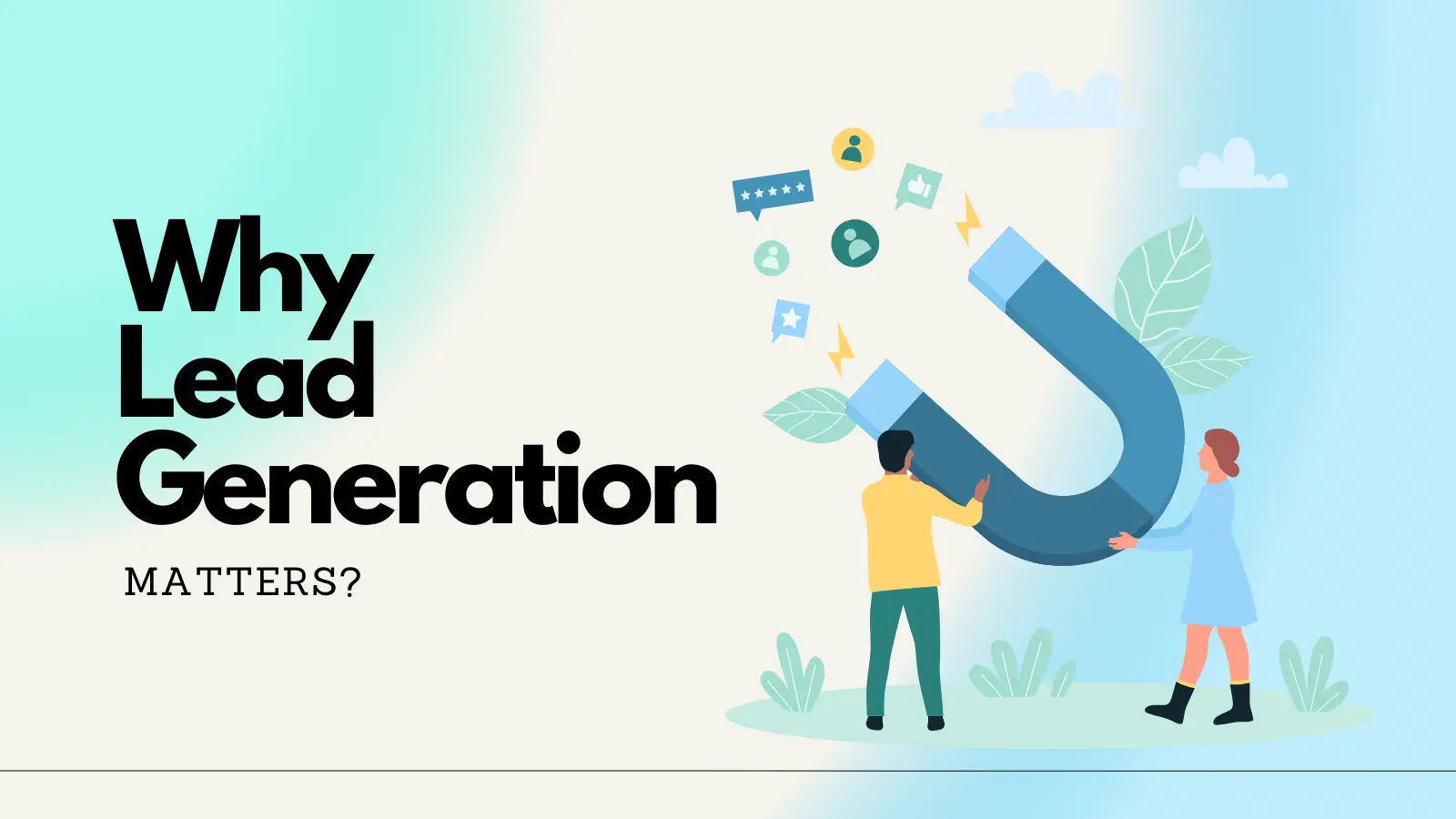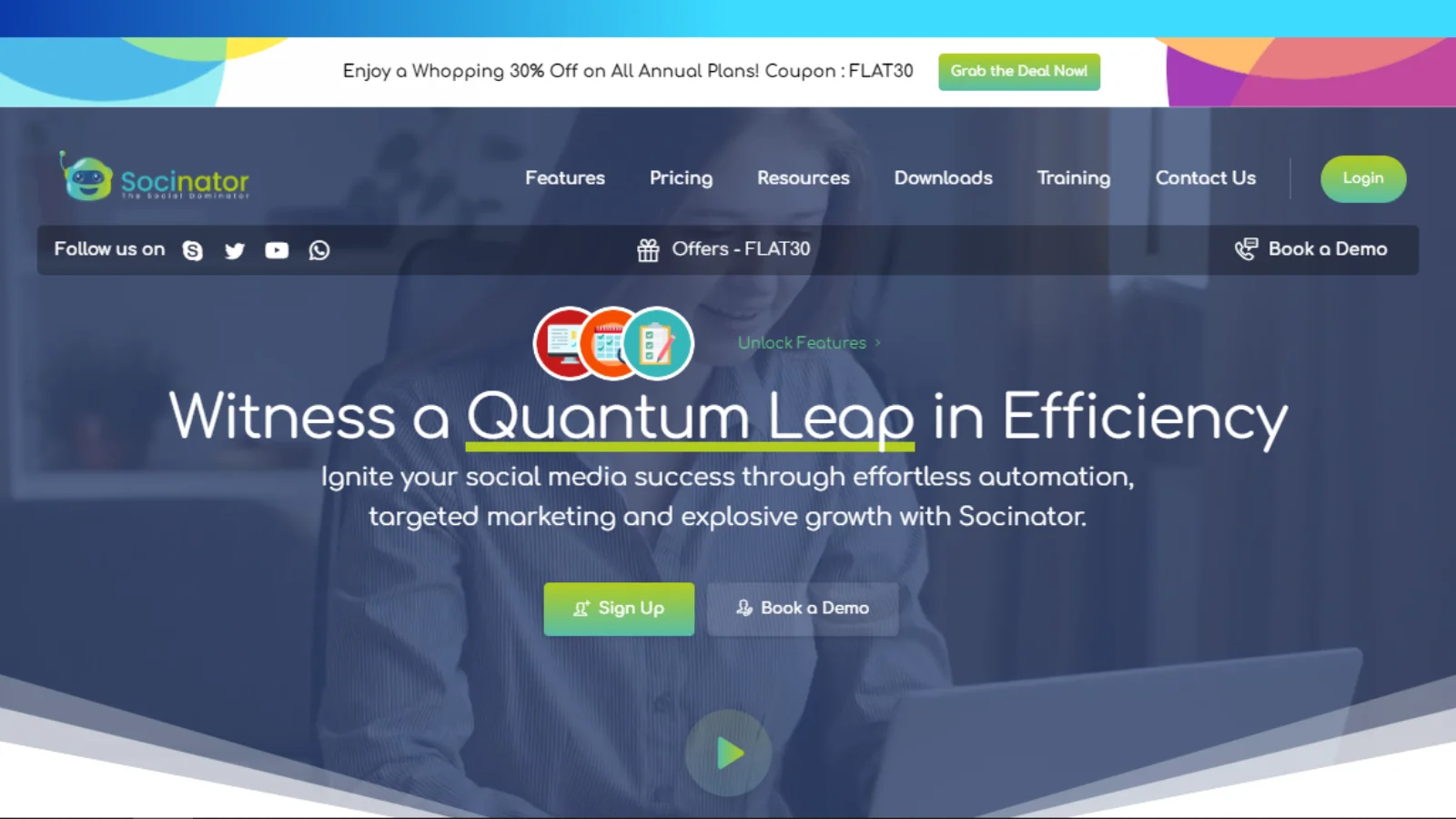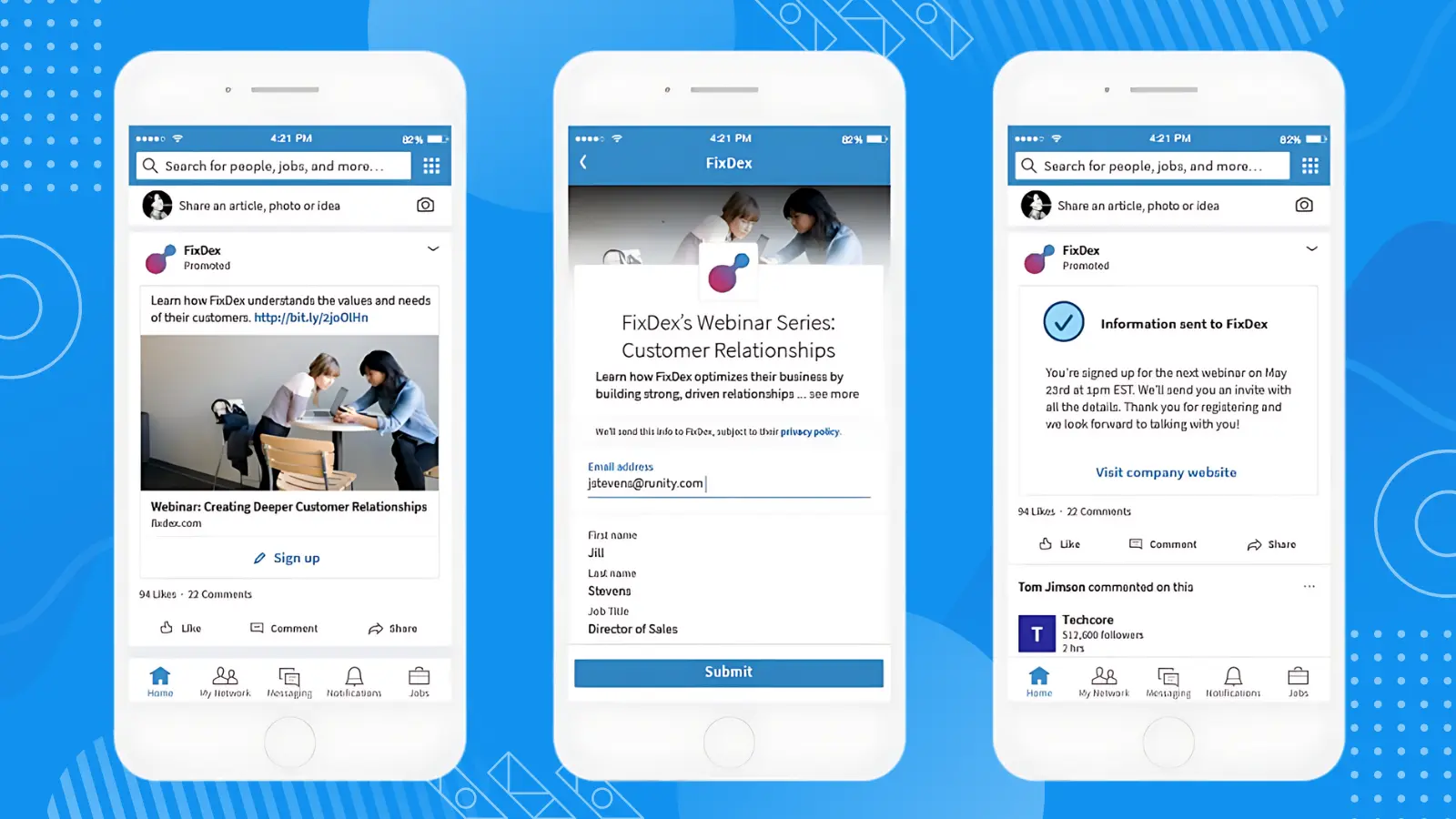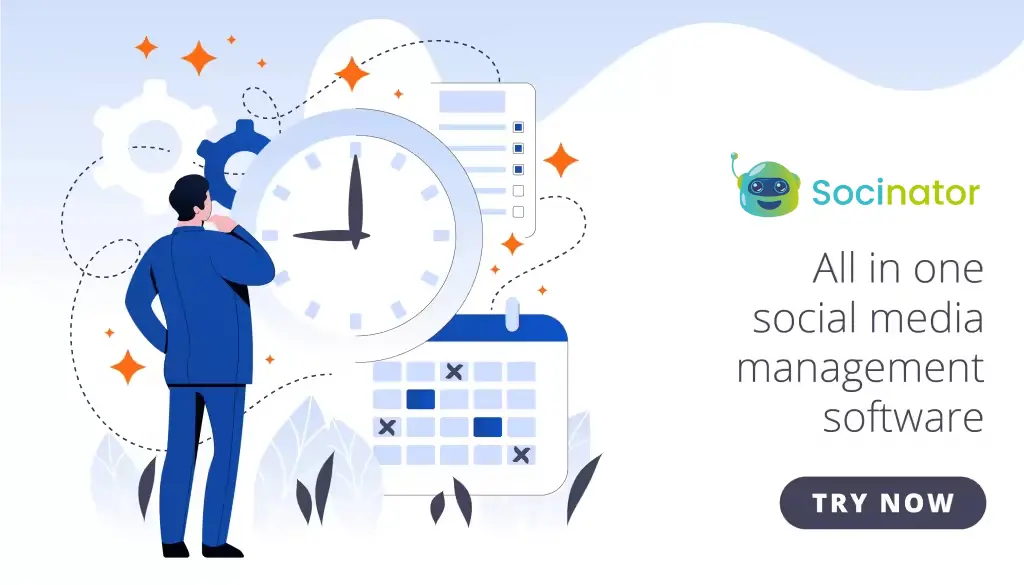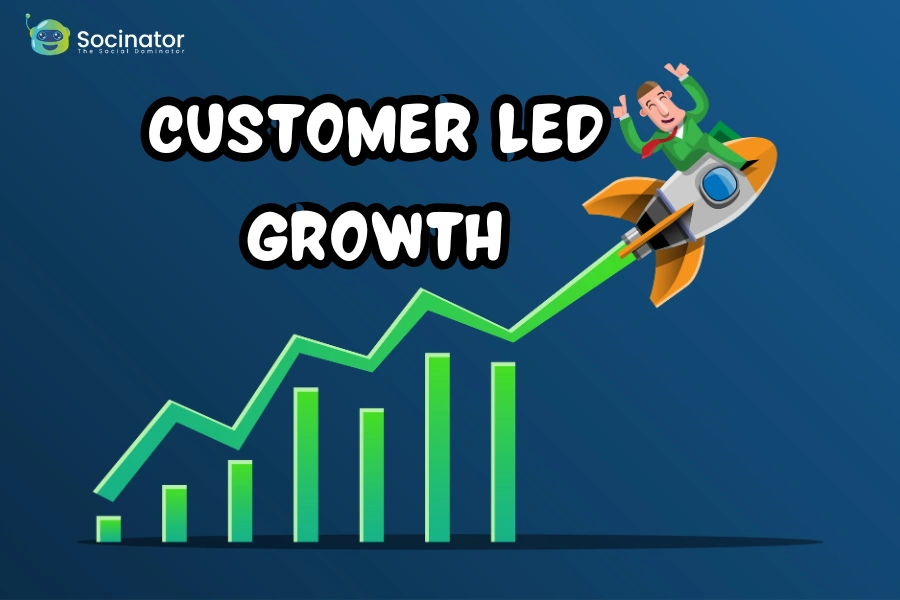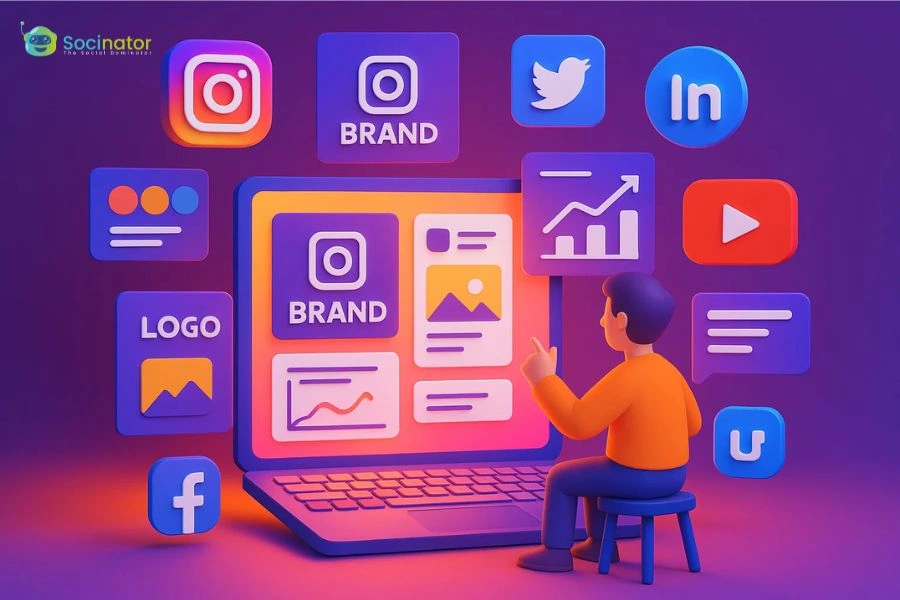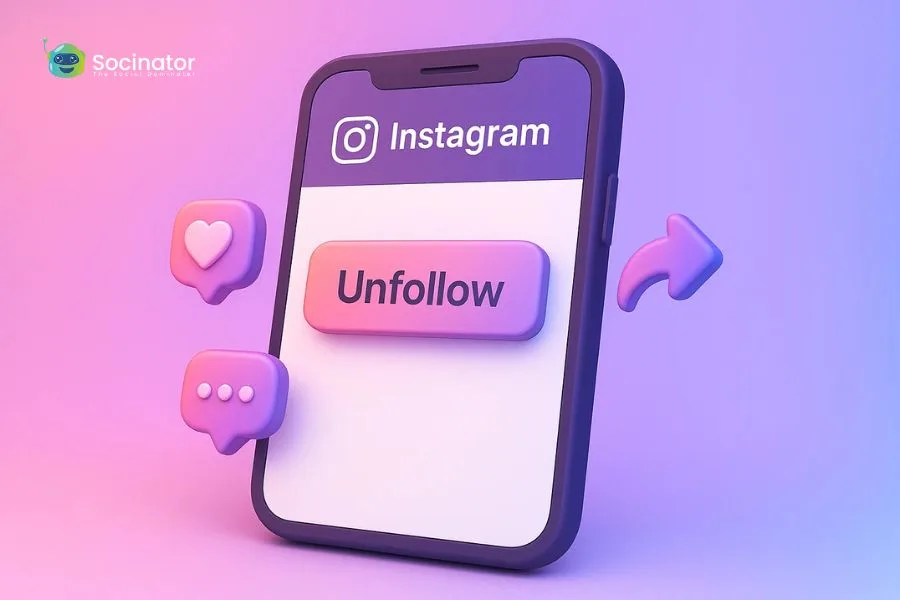Imagine you’re running a store. You have great products, a welcoming atmosphere, and a friendly staff. But there’s one problem: not enough people walk through the door. It is where lead generation comes in. Just like getting more foot traffic to your store, it’s all about attracting potential customers to your business and turning them into loyal buyers.
Generating leads is essential for creating sales pipelines, and driving business growth involves enticing and transforming strangers and potential leads into individuals who have shown interest in your company’s offerings or services. Whether through inbound marketing, outbound marketing, or both, lead generation strategies are designed to stimulate and capture interest, nurturing prospects through the sales funnel.
In a hurry? Listen to the blog instead!
What is Lead Generation?
Lead generation is the process of attracting and converting potential customers (leads) who show interest in your product or service. It involves creating valuable content, such as blog posts, ebooks, or webinars, to attract your target audience. Once you have their attention, you capture their contact information through forms or subscriptions. This information is then used to nurture leads through targeted marketing and personalized communication, guiding them toward making a purchase. Effective lead-generation strategies can significantly boost your sales pipeline and drive business growth.
Businesses usually use a combination of inbound and outbound marketing tactics to achieve successful lead generation. Inbound marketing focuses on creating high-quality content that attracts potential customers organically, while outbound marketing involves more proactive outreach methods like cold calling or email campaigns.
Why Does Lead Generation Matter?
Imagine a salesperson trying to close deals without any qualified leads. It’s like fishing in an empty pond – frustrating and unproductive. Effective lead generation guarantees a steady flow of potential customers interested in your offerings. It allows your sales team to focus on nurturing these leads and converting them into paying customers, significantly boosting your bottom line.
Here are several advantages of implementing a lead generation strategy:
- Increased Sales: A steady stream of qualified leads translates to more sales opportunities and ultimately – higher revenue.
- Improved Conversion Rates: By targeting the right audience, you attract prospects who are already somewhat interested in your product or service, making them more likely to convert.
- Enhanced Brand Awareness: Lead generation efforts often involve content creation and social media engagement, which help raise brand awareness and establish you as an authority in your industry.
- Cost-Effectiveness: Targeted generation proves more cost-effective because it focuses on reaching interested individuals, unlike traditional ads that often reach many people who might not be interested.
The Lead Generation Funnel:
Imagine a funnel where a broad audience enters the top, and qualified leads emerge at the bottom, ready to convert. It is essentially the lead generation funnel. Here’s an overview of the critical stages:
- Awareness: Attract potential customers by making them aware of your brand and its offerings. Achieve this through content marketing, social media engagement, or search engine optimization (SEO).
- Interest: Grab the attention of individuals who connect with your brand’s message. It might involve offering valuable content, hosting webinars, or showcasing case studies.
- Decision: Nurture leads by providing them with further information and addressing their needs. This stage often involves email marketing, personalized consultations, or free trials.
- Action: Convert leads into paying customers by presenting a compelling offer that addresses their pain points.
The Power of LinkedIn Lead Generation –
LinkedIn continues to be a powerhouse for lead generation, especially for B2B companies. While user numbers may fluctuate, the platform boasts a massive professional network exceeding 830 million users. This vast pool of potential leads actively participates in professional networking, making them highly receptive to B2B outreach.
Optimizing Your LinkedIn Profile:
Your LinkedIn profile is your digital business card. To maximize generation of leads, ensure that your profile is fully optimized. Choose a polished profile photo, create an engaging headline, and write a brief but impactful summary that showcases your skills and the value you bring. Enhance your profile’s discoverability in search results by incorporating relevant keywords.
Building a Strong Network:
A robust LinkedIn network is crucial for successful generation of leads. Engage with industry professionals, potential clients, and influencers within your niche. Tailor your connection requests to create authentic relationships. Engage with your connections by interacting with their content through likes, comments, and shares. It enhances your visibility and solidifies your presence as an engaged participant in your industry.
Publishing Valuable Content:
In the context of lead generation, nothing beats the power of compelling content. Consistently publish valuable content that tackles the challenges and topics your audience cares about.
Articles, blog posts, and LinkedIn Pulse posts can showcase your expertise and provide insights. Enhance the engagement of your content by incorporating visuals, infographics, and videos. When your content resonates with your audience, they are more likely to connect with you and explore your offerings.
Leveraging LinkedIn Groups:
LinkedIn Groups operate as online communities where professionals with similar interests gather to share knowledge and insights. Joining and actively participating in relevant groups can significantly enhance your lead generation efforts. Share valuable content, participate in discussions, and offer solutions to problems. This positions you as a thought leader and attracts potential leads interested in your expertise.
Best Practices For Lead Generation:
know Your Audience:
Deeply understanding your audience is crucial for effective lead generation. Create detailed buyer personas that delve deeper than basic demographics, capturing their motivations, challenges, goals, and preferred communication channels. This information helps tailor your messaging and offers to resonate with potential leads on an individual level.
Provide Value:
Offering valuable content and resources is foundational in attracting and retaining leads. This content can take various forms, such as blog posts, ebooks, webinars, podcasts, or infographics. Ensure that your content addresses the pain points and challenges your audience faces, providing practical solutions and insights. By consistently delivering value, you establish trust and position yourself as an authoritative resource in your industry.
Use Multi-Channel Approaches:
Expand your lead generation efforts across various channels to optimize your reach and engagement. Combine content marketing with social media marketing, SEO strategies, and paid advertising. Each channel has its strengths in reaching different segments of your target audience at various stages of the buying journey. Integrating these channels ensures a consistent presence and enhances your chances of capturing leads wherever they are most active.
Optimize Your Landing Pages:
Your landing pages are crucial for turning visitors into potential leads. Optimize them for maximum effectiveness by focusing on clear and compelling headlines, concise yet persuasive copy, relevant visuals (such as videos or images), and strong calls-to-action (CTAs).
Assure your landing pages load swiftly and are optimized for mobile devices to deliver a smooth user experience. A/B testing can help you identify what resonates best with your audience and continuously improve your conversion rates.
Leverage Automation Tools:
LinkedIn automation tools are invaluable for streamlining and scaling your lead generation efforts. Platforms like Socinator can automate tasks such as scheduling social media posts, sending personalized email sequences, managing customer relationships, and tracking campaign performance. Automating these routine tasks allows you to dedicate more time to strategic planning and creativity, ensuring ongoing engagement with your audience. Automation also enables you to respond promptly to leads, nurturing them through the sales funnel more efficiently.
Monitor and Analyze Performance:
Consistently track the effectiveness of your lead generating campaigns using analytics tools. Track key metrics such as conversion rates, click-through rates (CTR), cost per lead (CPL), and return on investment (ROI). Analyze the data to identify trends, understand what strategies are working best, and pinpoint areas for improvement. By gaining insights into campaign performance, you can make data-driven decisions to optimize your budget allocation, refine targeting strategies, and enhance overall campaign effectiveness.
Engage and Nurture Leads:
Effective generation doesn’t end with capturing contact information- it involves nurturing leads through personalized engagement and relevant content. Implement lead nurturing workflows that deliver targeted content based on the prospect’s interests, behavior, and stage in the buying journey. Use email marketing automation to send drip campaigns, educational content, special offers, or personalized recommendations. Engage with leads on social media platforms by responding to comments, addressing inquiries, and sharing valuable insights. Building meaningful relationships with leads over time increases their likelihood of becoming loyal customers.
By integrating these best practices into your lead generation strategy, you can optimize your efforts to attract, engage, and convert quality leads who are more likely to become loyal customers.
How Socinator Can Enhance Your Lead Generation Efforts:
Socinator is a powerful social media automation tool designed to streamline and enhance lead generation processes. Socinator as a LinkedIn marketing software can significantly boost your generation efforts by automating repetitive tasks and providing valuable insights. Here’s how:
Automate LinkedIn Activities:
Socinator automates various LinkedIn activities, such as sending connection requests, messages, and endorsements. It saves time and ensures consistent engagement with your network, increasing your chances of generating leads.
Schedule and Publish Content:
Plan and post content across multiple social media platforms with ease. By ensuring consistent sharing, you can increase your reach and engagement. Regularly sharing valuable content not only attracts more leads but also helps convert them into loyal customers.
Monitor Engagement:
It allows you to monitor your social media engagement in real-time. It helps you understand how your audience engages with your content and identify opportunities to interact with potential leads.
Analyze Performance:
Socinator offers comprehensive analytics and reporting features, enabling you to monitor the effectiveness of your lead generating campaigns. This capability empowers you to refine your strategies and continuously enhance your outcomes.
Auto Removal of Useless Connections:
Maintaining a high-quality network is essential for effective lead generation. Socinator’s feature to automatically remove irrelevant or useless connections helps you focus on building relationships with those who matter most to your business goals.
Auto Engage with Likes & Comments:
Consistently engaging with potential leads’ content makes building relationships easier. Socinator automates the process of liking and commenting on posts, which increases your visibility and fosters connections that could turn into valuable leads.
You can elevation your lead generating efforts, turning prospects into valuable connections with ease by leveraging Socinator’s automation and analytics features.
The impact of LinkedIn ads on generating leads:
LinkedIn Ads provide an effective method to connect with a precise audience and generate leads. With LinkedIn ads lead generation, businesses can create customized campaigns that deliver their message to the right people at the right time.
Sponsored Content:
Sponsored Content allows you to feature your posts directly in the LinkedIn feeds of your target audience. This native advertising format blends seamlessly with organic content, making it less intrusive. Craft compelling ad copy, use eye-catching visuals, and include a clear call-to-action (CTA) to encourage engagement. Sponsored Content is ideal for promoting blog posts, whitepapers, webinars, and other valuable resources.
Sponsored InMail:
With Sponsored InMail, you can deliver customized messages directly to the LinkedIn inboxes of your desired audience. These messages have higher open rates compared to traditional email marketing. Personalization is crucial for achieving success with Sponsored InMail. Address the recipient by name, provide relevant content, and include a strong CTA. Sponsored InMail excels in promoting events, product launches, and special offers.
Text Ads:
Text ads are simple, yet effective ads displayed in LinkedIn’s sidebar. These advertisements include a title, description, and a small image. Text Ads are suitable for driving traffic to your website, landing pages, or lead generation forms. Use clear and compelling language to grab your audience’s attention and prompt them to act.
Dynamic Ads:
Dynamic Ads leverage LinkedIn’s user data to create personalized ad experiences. These ads can automatically populate with the recipient’s profile picture, name, and job title, making them highly engaging. Dynamic Ads are ideal for increasing brand awareness, driving website traffic, and generating leads. Use dynamic ads to showcase personalized content that resonates with your audience.
Also Read:
LinkedIn: The Modernistic Marketing & Lead Generation Tool
8 Awesome Tips To Use Linkedin Automation Tool For Lead Generation
Conclusion:
Lead generation involves connecting with the right people and guiding them from initial interest to purchase. By polishing your LinkedIn profile, using linkedin automation tools like Socinator to streamline your efforts, and running targeted ads, you can make meaningful connections and see genuine results. Dive into these strategies and watch your lead generation turn into genuine relationships and lasting growth. Your success starts with making these connections count.
FAQs:-
Q1. What are some common lead generation mistakes to avoid?
Common mistakes include unclearly defining your target audience, neglecting lead nurturing throughout the entire sales funnel, and failing to use analytics for optimizing campaigns. Addressing these can significantly improve your lead generation efforts.
Q.2 How can I measure the success of my lead generating campaigns?
Measure success by tracking conversion rates, lead quality, cost per lead, and ROI. Use analytics tools to gather data and adjust your strategies based on performance.
Q.3 How crucial is content marketing for generating leads?
Content marketing plays a crucial role in lead generation by actively attracting and engaging prospects. High-quality content that addresses audience pain points can drive traffic, increase conversions, and build brand authority.

